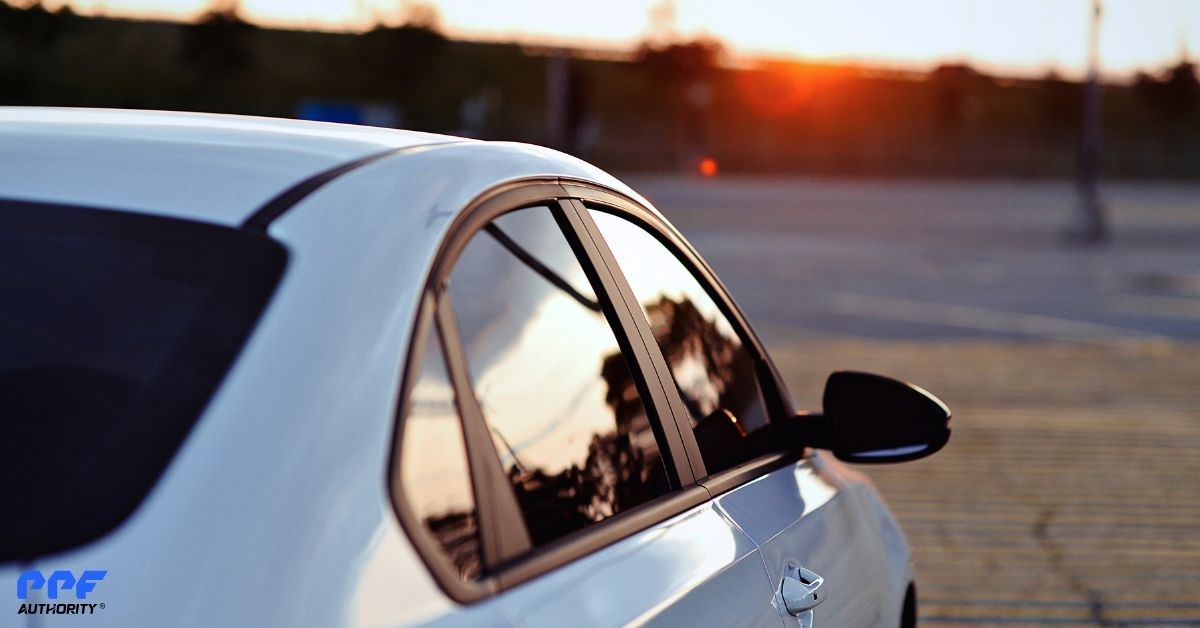Benefits & Features
What is Window Tint?
Window tint is a thin film applied to the interior or exterior of vehicle windows. It helps in reducing glare, blocking UV rays, controlling heat, and enhancing privacy. Tint comes in various shades, materials, and levels of darkness, measured by Visible Light Transmission (VLT).
What Are the Benefits of Window Tinting?
Window tinting offers multiple benefits, including:
- Heat Reduction: Blocks infrared radiation, reducing cabin heat.
- UV Protection: Filters up to 99% of harmful UV rays, preventing skin damage and interior fading.
- Glare Reduction: Minimizes glare from the sun and headlights, improving visibility.
- Privacy: Makes it harder for outsiders to see inside your vehicle.
- Aesthetic Enhancement: Gives a sleek, polished appearance.
- Shatter Resistance: Holds glass together in case of breakage.
What is VLT (Visible Light Transmission)?
VLT refers to the percentage of visible light that passes through the tint:
- Higher VLT (e.g., 70%): More light passes through (lighter tint).
- Lower VLT (e.g., 20%): Blocks more light (darker tint).
Legal & Technical Considerations
Is Window Tinting Legal?
Yes, but laws vary by state or country. Regulations include:
- Maximum VLT percentage allowed.
- Types of windows that can be tinted (e.g., front vs. rear).
- Reflectivity levels for metallic tints.
Tip: Always check local laws to avoid fines or forced removal.
What Are the Different Types of Window Tint?
Each type of tint offers different benefits:
- Dyed Tint: Affordable, but may fade over time.
- Metallic Tint: Reflects heat and UV rays but can interfere with signals.
- Carbon Tint: Durable, heat-resistant, and non-metallic.
- Ceramic Tint: Top-tier option, offering superior heat rejection and UV protection without signal interference.
Installation & Maintenance
How Long Does Window Tint Last?
- Dyed Tint: 3–5 years.
- Carbon & Ceramic Tints: 10+ years with proper care.
Can I Install Window Tint Myself?
DIY kits are available, but professional installation is recommended for:
- Precision: Ensures a perfect fit.
- Quality Materials: Longer-lasting, high-performance films.
- Warranty: Professional services often include a guarantee.
How Long Does It Take to Install Window Tint?
Installation typically takes 2–4 hours, depending on the vehicle size.
How Should I Care for My Tinted Windows?
Proper care can extend the life of your tint:
- Wait to Clean: Allow 7–10 days for curing.
- Use Tint-Safe Cleaners: Avoid ammonia-based solutions.
- Gentle Cleaning: Use a microfiber cloth and mild soap.
- Avoid Abrasives: Do not use paper towels or scrubbing pads.
Comparisons & FAQs
Will Window Tint Block My GPS or Phone Signal?
Only metallic tints may interfere. Carbon and ceramic tints are signal-safe.
Does Window Tint Provide UV Protection?
Yes, most high-quality tints block up to 99% of UV rays.
Can Window Tint Reduce Heat Inside My Car?
Yes, by blocking infrared rays, particularly with ceramic or carbon tints.
Is Window Tint Scratch-Proof?
Tints are scratch-resistant, but not scratch-proof. Avoid abrasive cleaning tools.
Can Window Tint Be Removed?
Yes, but DIY removal can leave adhesive residue or damage the glass. Professional removal is recommended.
How Much Does Window Tinting Cost?
Cost depends on tint type and vehicle size:
- Basic Dyed Tint: $100–$300.
- Carbon or Ceramic Tint: $300–$1,000+.
What’s the Difference Between Factory Tint and Aftermarket Tint?
- Factory Tint: Pre-dyed glass offering privacy but no UV or heat rejection.
- Aftermarket Tint: Applied film providing custom shades, UV protection, and heat control.
Pro Tip: You can layer aftermarket tint over factory tint for better performance.
Can Window Tint Protect Against Shattering?
Yes, tint reinforces glass, helping to hold shards together during impact.
Does Window Tint Prevent Fading of My Car’s Interior?
Yes, by blocking UV rays, it protects against fading, cracking, and discoloration.
How Do I Choose the Right Tint Shade?
Consider these factors:
- Local Laws: Check legal VLT limits.
- Privacy Needs: Darker tints (e.g., 20% VLT) offer more privacy.
- Driving Visibility: Higher VLT (e.g., 50%–70%) ensures visibility at night.
- Aesthetic Preferences: Choose a shade that complements your car.
Is Window Tint Worth It?
Yes! It enhances comfort, safety, and resale value, while offering heat rejection, UV protection, and privacy.
Conclusion
Window tinting is more than just an aesthetic upgrade—it’s a functional enhancement that protects your vehicle and improves your driving experience. By understanding tint types, benefits, and maintenance, you can make an informed decision for long-lasting results.
For the best outcome, always choose high-quality materials and trust professional installers for flawless application.
